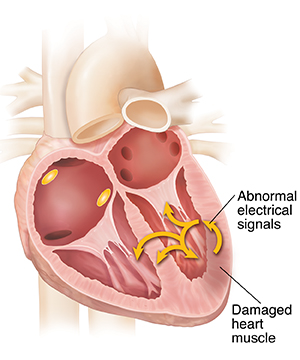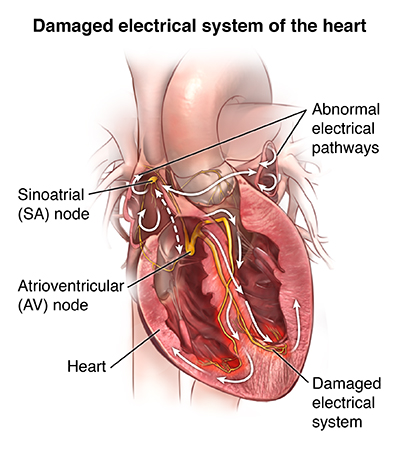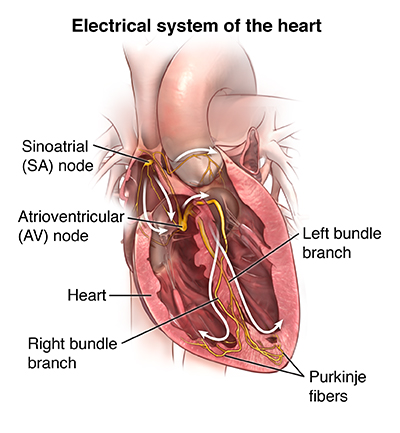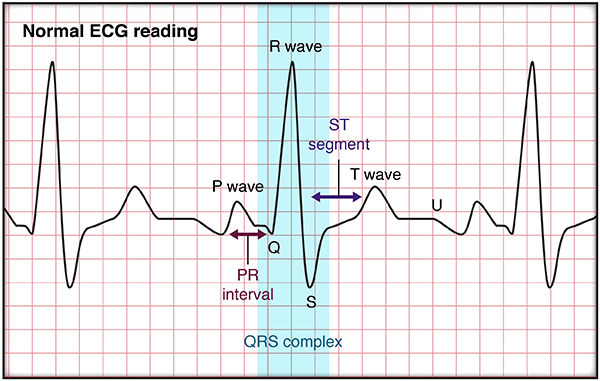Some arrhythmias may cause few, if any, problems. In this case, you may not need treatment. When the arrhythmia causes symptoms, you have several different choices for treatment. Your healthcare provider will choose a treatment based on the type of arrhythmia you have, how severe your symptoms are, and whether you have other conditions such as diabetes, kidney failure, or heart failure. These can affect the course of the treatment.
Some treatments for arrhythmias include:
- Lifestyle changes. Stress, caffeine, and alcohol can cause arrhythmias. Your healthcare provider may recommend that you avoid caffeine, alcohol, or any other things that may be causing the problem. If your provider thinks that stress is a cause, he or she may recommend meditation, stress-management classes, an exercise program, or psychotherapy to ease stress.
- Medicine. Medicine is available to treat arrhythmias. Your healthcare provider will recommend a medicine based on to the type of arrhythmia you have, whether you have other health conditions, or whether you take other medicines.
- Cardioversion. In this procedure, the healthcare provider sends an electrical shock to your heart through the chest. This will stop certain very fast arrhythmias such as atrial fibrillation, supraventricular tachycardia, or atrial flutter. You are connected to an ECG monitor, which is also connected to the defibrillator. The electrical shock is delivered at the point during the ECG cycle to change the rhythm to a normal one.
- Ablation. This is an invasive but nonsurgical procedure done in the electrophysiology lab. The healthcare provider puts a thin, flexible tube (catheter) into your heart through a vessel in your groin or arm. The provider uses a method such as radiofrequency ablation to destroy the site of the arrhythmia. The procedure uses very high frequency radio waves to heat the tissue until the site is destroyed. Cryoablation is another procedure that is used. For this an ultra-cold substance is put on the site. This freezes the tissue and destroys the site.
- Pacemaker. A permanent pacemaker is a small device that is put under the skin, often in the chest region just under the collarbone. It sends electrical signals to start or regulate a slow heartbeat. A permanent pacemaker may be used to make the heart beat if the heart's natural pacemaker (the SA node) is not working as it should, or if the electrical pathways are blocked. Pacemakers are often used for slow arrhythmias such as sinus bradycardia, sick sinus syndrome, or heart block.
- Implantable cardioverter defibrillator (ICD). An ICD is a small device similar to a pacemaker. It is put under the skin, often just under the collarbone. An ICD senses the rate of the heartbeat. When your heart rate goes higher than the level entered into the device, it sends an electrical shock to the heart. This corrects the rhythm to a slower, more normal heart rhythm. ICDs are used with a pacemaker to send an electrical signal to regulate a slow heart rate. ICDs are used for life-threatening fast arrhythmias such as ventricular tachycardia or ventricular fibrillation.
- Surgery. Surgery is usually done only when all other treatments have failed. Surgical ablation is a major surgery that needs general anesthesia. The surgeon opens your chest to reach your heart. The surgeon destroys or removes the tissue causing the arrhythmia.




